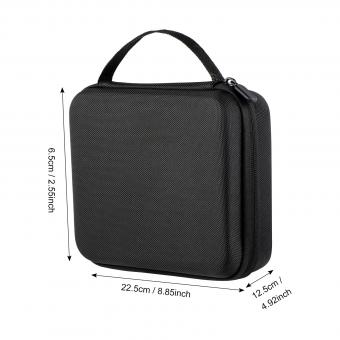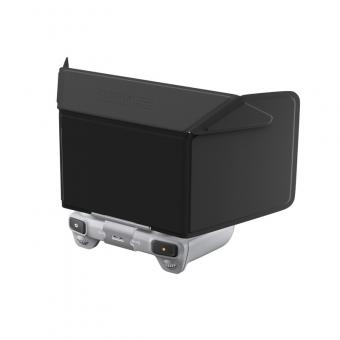Alveoli Are Microscopic Sacs Designed To Do What ?
Alveoli are microscopic sacs in the lungs that are designed to facilitate the exchange of oxygen and carbon dioxide between the air and the bloodstream.
1、 Facilitate gas exchange in the lungs
Alveoli are microscopic sacs designed to facilitate gas exchange in the lungs. These tiny structures are the site where oxygen from the air we breathe enters the bloodstream and carbon dioxide, a waste product of cellular respiration, is removed from the body. The alveoli are located at the ends of the bronchioles, which are the smallest airways in the lungs.
The alveoli have a unique structure that allows for efficient gas exchange. They are surrounded by a network of capillaries, which are tiny blood vessels. The walls of the alveoli and capillaries are extremely thin, allowing for the diffusion of gases between the air and the blood. Oxygen molecules move from the alveoli into the capillaries, where they bind to hemoglobin in red blood cells and are transported throughout the body. At the same time, carbon dioxide molecules diffuse from the capillaries into the alveoli and are exhaled.
Recent research has shed light on the importance of alveolar health in maintaining proper lung function. Studies have shown that exposure to pollutants, such as cigarette smoke or environmental toxins, can damage the alveoli and impair gas exchange. Additionally, certain diseases, such as chronic obstructive pulmonary disease (COPD) and emphysema, can cause the destruction of alveoli, leading to breathing difficulties.
Understanding the role of alveoli in gas exchange has led to advancements in medical treatments. For example, respiratory therapies, such as the use of supplemental oxygen or inhalers, aim to improve the efficiency of gas exchange in individuals with lung diseases. Furthermore, researchers are exploring regenerative medicine approaches to repair damaged alveoli and restore lung function.
In conclusion, alveoli are microscopic sacs designed to facilitate gas exchange in the lungs. Their unique structure and location allow for the efficient diffusion of oxygen and carbon dioxide between the air and the bloodstream. Ongoing research continues to enhance our understanding of alveolar health and its impact on lung function, leading to improved treatments for respiratory diseases.

2、 Increase surface area for efficient oxygen and carbon dioxide exchange
Alveoli are microscopic sacs designed to increase the surface area for efficient oxygen and carbon dioxide exchange in the lungs. These tiny air sacs are the functional units of the respiratory system and play a crucial role in the process of respiration.
The primary function of the alveoli is to facilitate the exchange of gases between the lungs and the bloodstream. Oxygen from the inhaled air diffuses across the thin walls of the alveoli into the surrounding capillaries, where it binds to hemoglobin and is transported to the body's tissues. At the same time, carbon dioxide, a waste product of cellular respiration, diffuses from the capillaries into the alveoli to be exhaled.
The structure of the alveoli is optimized for efficient gas exchange. They are lined with a single layer of epithelial cells, which are extremely thin and permeable to gases. This thinness allows for rapid diffusion of oxygen and carbon dioxide across the alveolar walls. Additionally, the alveoli are surrounded by an extensive network of capillaries, which further enhances the exchange of gases by providing a large surface area for diffusion.
Recent research has shed light on the importance of alveolar health in maintaining respiratory function. Studies have shown that exposure to pollutants, such as cigarette smoke or environmental toxins, can lead to inflammation and damage to the alveoli. This damage can impair the efficiency of gas exchange and contribute to respiratory diseases such as chronic obstructive pulmonary disease (COPD) or emphysema.
In conclusion, alveoli are microscopic sacs that increase the surface area for efficient oxygen and carbon dioxide exchange in the lungs. Their structure and function are essential for maintaining respiratory health, and understanding their role is crucial in the prevention and treatment of respiratory diseases.

3、 Aid in the diffusion of oxygen into the bloodstream
Alveoli are microscopic sacs designed to aid in the diffusion of oxygen into the bloodstream. These tiny structures are found in the lungs and play a crucial role in the respiratory system. The alveoli are surrounded by a network of capillaries, which allows for the exchange of gases between the air in the lungs and the blood.
When we breathe in, air enters the lungs and travels through the bronchial tubes, eventually reaching the alveoli. The walls of the alveoli are extremely thin, consisting of a single layer of cells. This thinness is essential for efficient gas exchange. Oxygen from the inhaled air diffuses across the alveolar walls and into the surrounding capillaries, where it binds to hemoglobin in red blood cells. At the same time, carbon dioxide, a waste product of cellular respiration, diffuses out of the capillaries and into the alveoli to be exhaled.
The large surface area of the alveoli, combined with their thin walls, allows for a rapid exchange of gases. It is estimated that the total surface area of the alveoli in the lungs is around 70 square meters, roughly the size of a tennis court. This extensive surface area maximizes the contact between the air and the blood, facilitating the diffusion of oxygen into the bloodstream.
Recent research has shed light on the importance of alveolar health in maintaining overall lung function. Various factors, such as smoking, pollution, and certain diseases, can damage the alveoli, leading to reduced gas exchange efficiency. This can result in respiratory problems and decreased oxygen levels in the body.
Understanding the role of alveoli in gas exchange is crucial for diagnosing and treating respiratory conditions. Researchers are continually exploring ways to improve our understanding of alveolar function and develop therapies to protect and repair these vital structures.

4、 Remove carbon dioxide from the bloodstream
Alveoli are microscopic sacs designed to remove carbon dioxide from the bloodstream. These tiny structures are found in the lungs and play a crucial role in the process of respiration.
When we breathe in, oxygen enters our lungs and is transported to the alveoli through a network of airways. The alveoli are surrounded by a dense network of capillaries, which are tiny blood vessels. This close proximity allows for efficient gas exchange between the air in the alveoli and the blood in the capillaries.
The walls of the alveoli are extremely thin, consisting of a single layer of cells. This thinness is essential for the diffusion of gases. Oxygen from the air in the alveoli easily passes through the alveolar walls and into the bloodstream, where it binds to hemoglobin in red blood cells and is transported to the body's tissues.
At the same time, carbon dioxide, which is a waste product of cellular respiration, diffuses out of the bloodstream and into the alveoli. From there, it is exhaled out of the body when we breathe out. This process of removing carbon dioxide from the bloodstream and replacing it with oxygen is vital for maintaining the body's pH balance and ensuring proper cellular function.
It is important to note that the understanding of alveoli and their functions has evolved over time. Recent research has shed light on the role of alveoli in immune responses and inflammation. Alveolar macrophages, a type of immune cell found in the alveoli, help to protect the lungs from pathogens and foreign particles. Additionally, studies have shown that alveolar damage and dysfunction can contribute to various respiratory diseases, such as chronic obstructive pulmonary disease (COPD) and pneumonia.
In conclusion, alveoli are microscopic sacs designed to remove carbon dioxide from the bloodstream. Their thin walls and close proximity to capillaries allow for efficient gas exchange, ensuring the delivery of oxygen to the body's tissues and the removal of carbon dioxide. Ongoing research continues to deepen our understanding of the complex functions and importance of alveoli in respiratory health.





(1)-340x340.jpg)





















-200x200.jpg)









There are no comments for this blog.